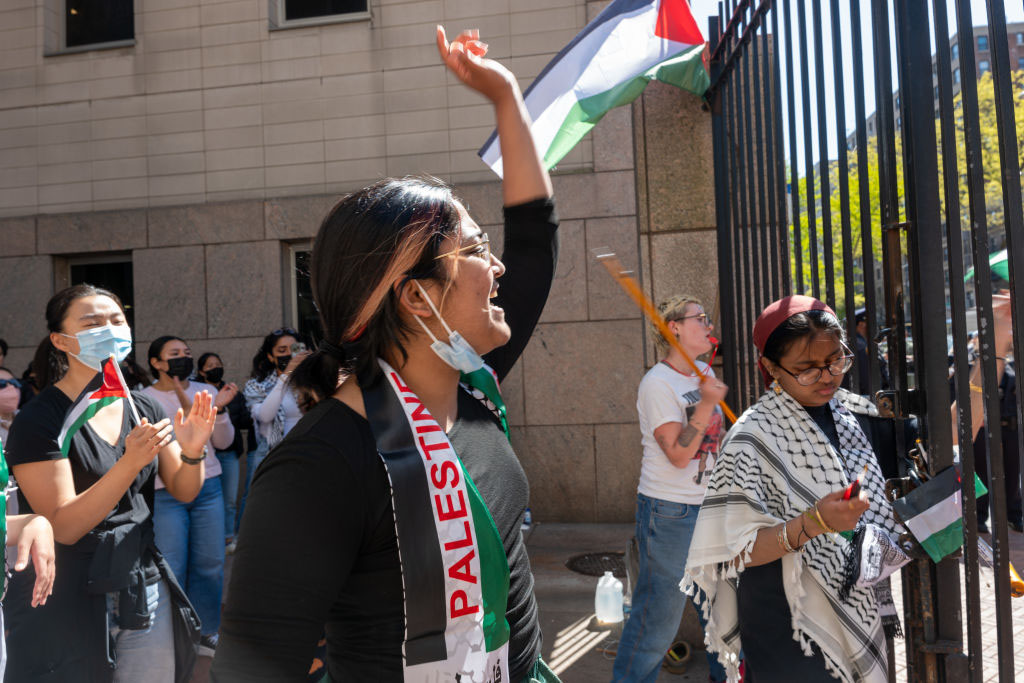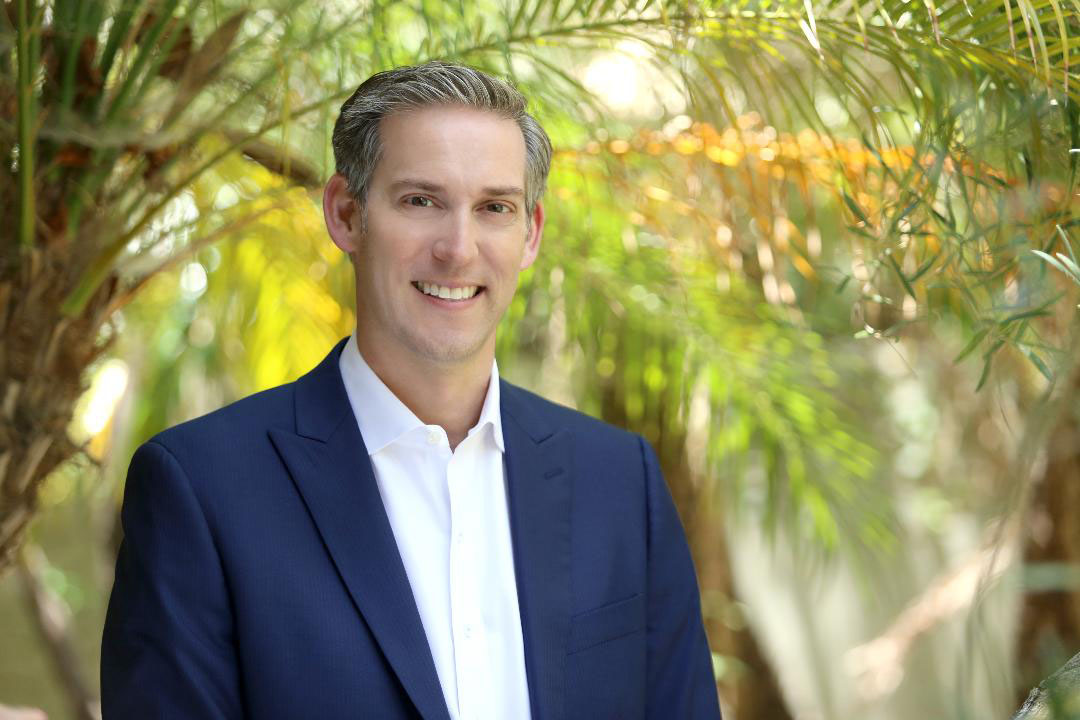 A Passover seder in Hattiesburg, Miss. Photo courtesy of Rob Friedman.
A Passover seder in Hattiesburg, Miss. Photo courtesy of Rob Friedman. As a rabbinic student at the Hebrew Union College-Jewish Institute of Religion in Los Angeles, my breaks from study are tied to Jewish holidays. This Passover, rather than spend my spring break relaxing and visiting family, I embarked on a 2,300-mile journey through the American South, visiting small communities and leading them in Passover-themed programming as a representative of the Goldring/Woldenberg Institute of Southern Jewish Life (ISJL).
Jewish communities exist today all across our country, in both large cities and small towns. Serving congregations across 13 states, the Jackson, Miss.-based ISJL is committed to the belief that every Jewish community, no matter how small, deserves the same access to excellent Jewish programming. For communities large and small, the six departments of the ISJL (community engagement, cultural programming, education, history, museum and rabbinic) serve as a “one-stop shop” for Jewish life in the South, bringing Jewish services and support to communities in need of them.
The rabbinic department, consisting of Rabbis Jeremy Simons and Matthew Dreffin, provides rabbinic services to the dozens of congregations throughout the region without full-time rabbis, regardless of their congregational size or financial assets. Providing holiday and life-cycle programming, Simons and Dreffin act as traveling rabbis across the region, spending Shabbats often in these small communities.
Now in its seventh year, one of the most successful programs the ISJL rabbinic department is its Passover Pilgrimage, sending the two rabbis on a whirlwind tour of Southern Jewish communities to bring Passover-based programming to as many communities as possible during the week of the holiday.
Having served as the rabbinic intern last summer, it was my pleasure to be offered the opportunity to join them on the Pilgrimage, allowing for even more communities to be reached.
Over eight days, I visited five communities from Mississippi to Virginia, leading Passover seders, adult education programming and Friday night Shabbat services. In each stop, I had wonderful and unique experiences as I forged connections with the communities and we celebrated the Passover holiday.
What follows are highlights of my journey, each stop a snapshot of the vibrancy and joy I found everywhere I turned.
Temple B’nai Israel, Natchez, Miss., April 7-8
There is a beauty to small towns. Nestled along a bend of the Mississippi River, Natchez was the first community on my Passover Pilgrimage. As the first permanent Jewish community in Mississippi, Natchez Jews have had a presence in the heart of the downtown for nearly 175 years. However, as with many cities in the South, the Jewish community is aging and shrinking, as younger Jews move to larger cities.
But seeing the seder I led, one would have no idea. The 60 people in attendance filled the basement social hall of the synagogue with prayers, songs and conversations, and the home-cooked meal by one of the synagogue members filled the hearts and stomachs of everyone in attendance.
One of the special things about this seder was seeing the entire Natchez community come together. Jews, Catholics and Episcopalians sitting together brought new meaning to one of the most well-known lines of the haggadah: “Let all who are hungry come and eat.”
B’nai Israel, Hattiesburg, Miss., April 10
Traditionally, during a Passover seder, there are three pieces of matzo on the table. There are several interpretations as to why, but the one that stands out is that the three pieces represent the past, present and future. The middle matzo, the present, is the one that is broken to represent the imperfect world in which we dwell. And as much as that resonates with me, my second stop, in Hattiesburg, drew me much more to the third piece of matzo, symbolizing the future.
In many of the small communities where the ISJL rabbinic department works, the communities are shrinking due to the younger generations moving away. However, the opposite was much the case in Hattiesburg. There were nearly 70 people in attendance, of various backgrounds and ages, but nothing made me happier than seeing the 15 children who were there. And rather than seat them with their families or relegate them to the back of the social hall, the community put them up front, at the same table with me, reigniting my hope for the future of communities like Hattiesburg.
The Upper Cumberland Jewish Community, Crossville, Tenn., April 12
One of the sad, but unfortunately true, realities of these small communities is that as they age, and as younger people move away, they will lose numbers until they are forced to close.
When the ISJL was founded in 1986, it was only a museum, designed to provide a place for closing communities to store and donate their sacred objects and artifacts. Now, with six departments, the ISJL is helping keep small communities afloat by loaning various sacred objects to other communities. I had the pleasure to partake in such a loan in Crossville.
Since the 1960s, Crossville has grown into a resort town, with numerous lakes and golf courses attracting residents from across the Midwest, as well as from Florida, New York and California. But due to its transplant nature, the community does not have a permanent building or sacred objects. With that in mind, a family requested a long-term loan from the ISJL of a Torah scroll.
However, very few people knew that the Torah was going to be delivered, so we decided to surprise the community by having it be the reward for the afikomen. Seeing the reaction of 80 Jews and non-Jews as we revealed the Torah scroll to them reminded me of the opportunities I take for granted.
Blacksburg Jewish Community Center, Blacksburg, Va., April 13
Judaism is a complex experience. For me, in addition to the religious, spiritual and cultural aspects of it, Judaism and Jewish rituals also provide a cerebral and academic experience, allowing us to engage in study on multiple levels. It was for this reason that I was so excited to lead not just Passover seders but also an educational program.
Located just blocks from Virginia Tech University, the Jewish community of Blacksburg, I found, is filled with a similar passion for the study of Judaism in both a religious and academic perspective.
We are commanded in the haggadah to retell the Passover story, and to do so as if it has happened to us. With that in mind, our discussion focused on bringing the values of the Passover story — freedom, its comparison to enslavement, and the treatment of the other — into the 21st century.
To serve as a guide for such a vibrant and lively discussion on how such values can and do appear in our world was inspiring, as it showed that the desire to engage in the study of Judaism and Jewish living exists in every community.
Congregation Emanuel, Statesville, N.C., April 14
The ISJL operates as a transdenominational organization, serving communities that identify as Reform, Conservative, Orthodox and unaffiliated.
As a student at a Reform seminary, most of my opportunities to lead services occur in a Reform setting. However, the final stop on my Passover Pilgrimage afforded me the opportunity to spend my Shabbat in a Conservative setting, with Congregation Emanuel of Statesville.
Housed in one of the few 19th-century synagogues still in existence, the community survives due to the members’ passion and the assistance they receive from various nearby rabbis in addition to the ISJL. As with many small communities, consistent worship is dependent upon lay leadership, as a steady rabbinic presence cannot be taken for granted. When they do receive a visiting rabbi, they are incredibly appreciative, and I loved being able to lead the community in prayer.
In addition to enjoying the opportunity to lead in a siddur and tradition different from what I am accustomed, the passion and enthusiasm with which they filled such an historic space was truly uplifting and made my Shabbat truly one of shalom, of peace and wholeness.
Rob Friedman is a rabbinic student at Hebrew Union College-Jewish Institute of Religion.






















 More news and opinions than at a Shabbat dinner, right in your inbox.
More news and opinions than at a Shabbat dinner, right in your inbox.